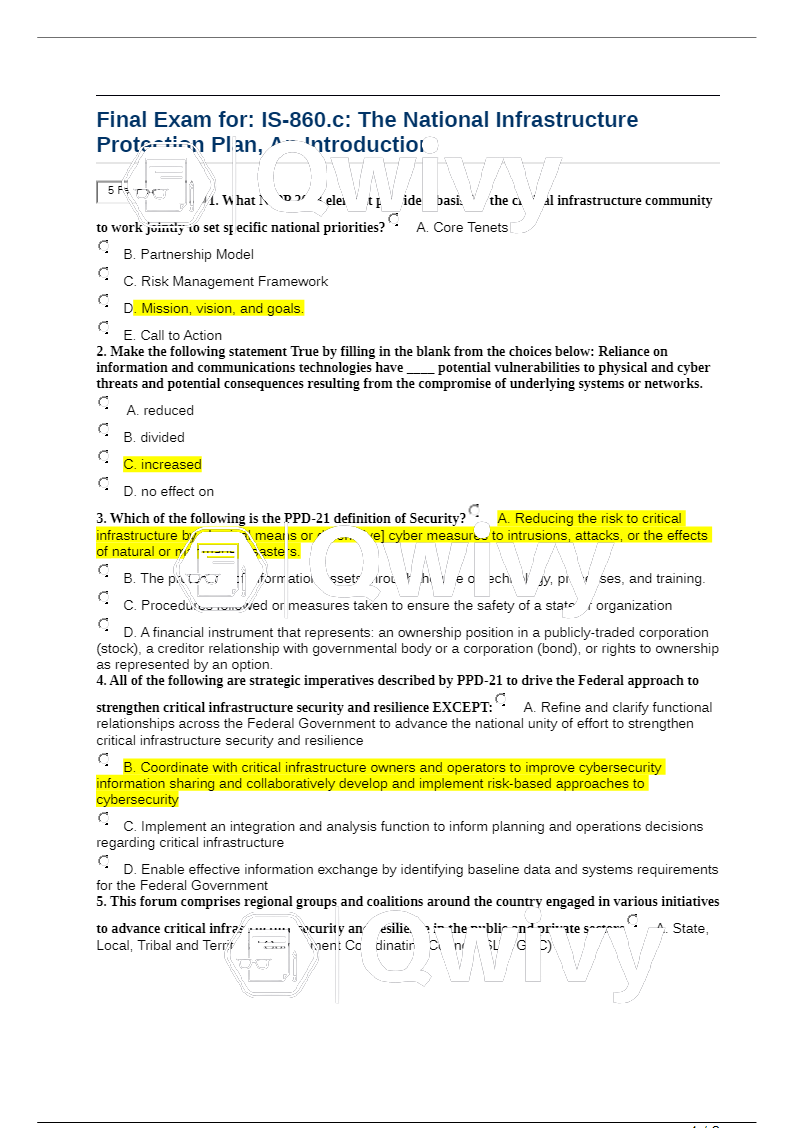
NUR 2633 Maternal Child Health Nursing
Maternal Newborn Exam 2
Qwivy | Qwivy.com | www.qwivy.com
What causes urinary retention after birth?
- Temporary nerve damage, caused by edema from labor
Common side effects of antibiotics
- Gi effects (nausea, vomiting, diarrhea, bloating, indigestion, abdominal pain,
loss of appetite)
Common sites for infection following birth?
- Reproductive tract
Nursing care for postpartum preeclampsia
- Bedrest, seizures - give mag sulfate and antihypertensive med, assess for
edema, measure i and o
Postpartum preeclampsia
Qwivy | Qwivy.com | www.qwivy.com
- Headache
sob
blurred vision
nausea
vomiting
edema
seizure, other neuro deficit
epigastric pain
Mastitis
- Infection
common causative factor: organism is the hemolytic staphylococcus aureus,
introduced from the infant's mouth through a fissure in the nipple.
May progress to a breast abscess if not effectively managed.
Mastitis management
- Antibiotic therapy
application of heat or cold to the breast
hydration
analgesics/Nsaids
maintain lactation: empty the breast every 2-4 hours by breastfeeding,
manual expression, or breast pump
Fundal assessment
Qwivy | Qwivy.com | www.qwivy.com
- @ delivery - midline, midway between umbilicus and symphysis pubis
1 hour - at the level of umbilicus
24 hour - 1 cm below umbilicus
2 days - 2 cm below umbilicus
3 days - 3 cm below umbilicus
7 days - palpable at the symphysis pubis
9-10 days - not palpable
Manifestations of withdrawal in a newborn
- Irritability
disturbed sleep pattern
constant moving, possibly leading to abrasions on the elbows, knees, or nose.
Tremors
frequent sneezing
shill, high-pitched cry
possible hyperreflexia and clonus (neuro irritability)
convulsions
Qwivy | Qwivy.com | www.qwivy.com
tachypnea (rapid resp) possible leading to hyperventilation and alkalosis
vomiting and diarrhea, leading to large amounts of fluid loss and secondary
dehydration
Newborn vital signs:
- Hr.: 120-160 bpm
RR: 30-60/min
t: 36.5-37.4c
Apgar scale
- A standard measurement system that looks for a variety of indications of
good health in newborns
Appearance
- 0 - blue, pale
1 - pink body, blue extremities
2 - pink
Pulse
- 0 - absent
1 - below 100/min
2 - over 100/min
Qwivy | Qwivy.com | www.qwivy.com
Grimace (reflex irritability)
- 0 - floppy
1 - minimal response to stimulation
2 - prompt response to stimulation
Activity (muscle tone)
- 0 - absent
1 - flexed arms and legs
2 - active
Respirations
- 0 - absent
1 - slow and irregular
2 - vigorous cry
Qwivy | Qwivy.com | www.qwivy.com
| Category | Exam (elaborations) |
| Authors | Qwivy.com |
| Pages | 16 |
| Language | English |
| Tags | NUR 2633 / NUR2633 Exam 2 (Latest 2021 / 2022): Maternal Child Health Nursing - Rasmussen College | Qwivy Qwivy |
| Comments | 0 |
| Sales | 0 |












{{ userMessage }}





